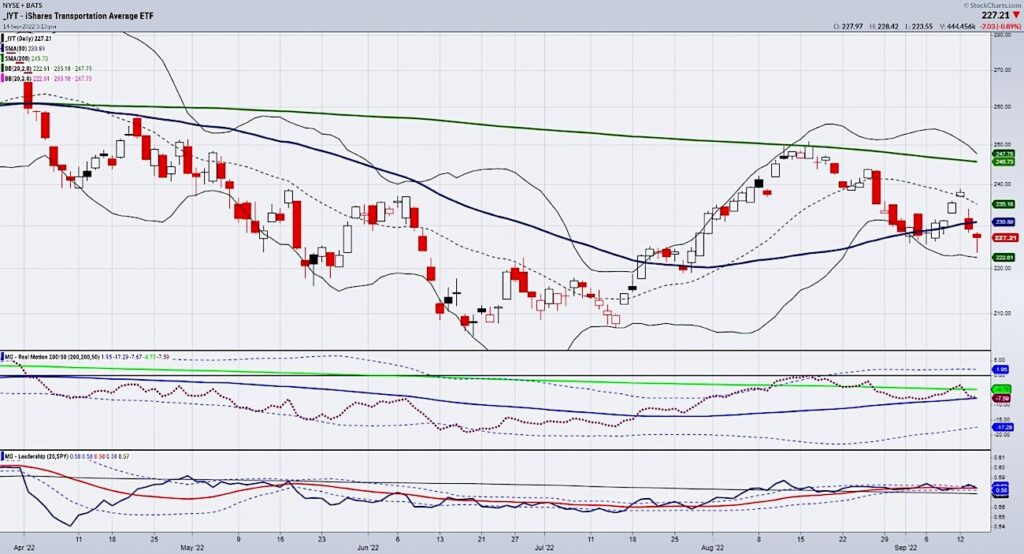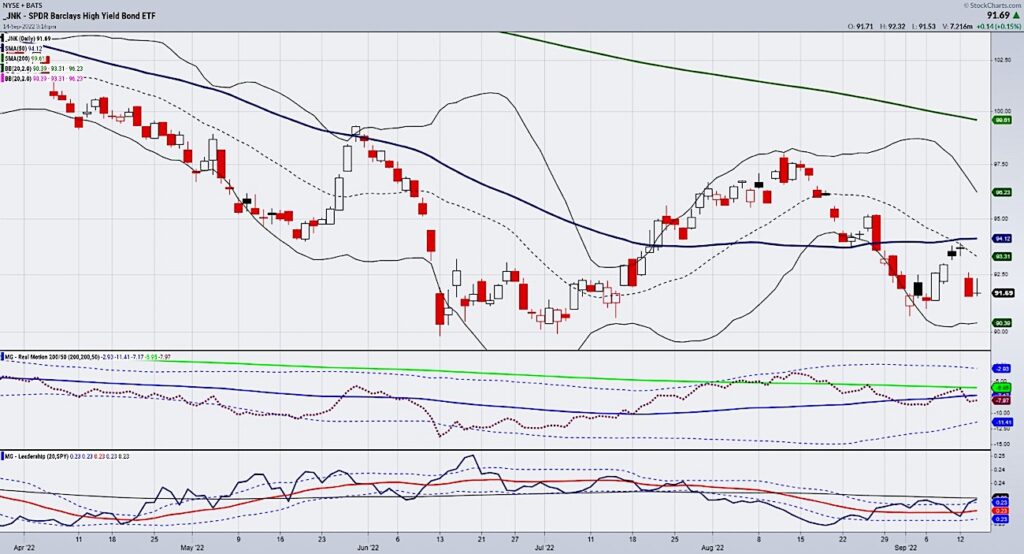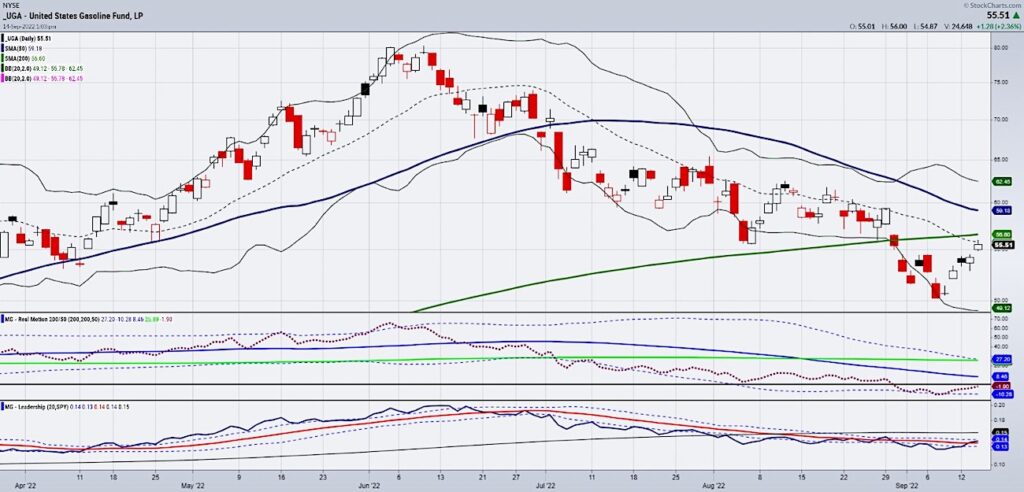
After Tuesday’s stock market rout, the outperforming sector transportation on Wednesday, struggled.
Although our other indicator we have been writing about, junk bonds led the rally in the indices, transportation or IYT did not follow.
Why?
A Western-style showdown between 60,000 rail workers, their unions and some of the largest U.S. railroad operators is already having an impact on the market.
We brace ourselves as the outcome stands in the balance.
According to CNBC a strike can cost the U.S. economy $2B in economic output per day.
Furthermore, there are reports of railways stopping to take grain and animal-feed shipments. Other raw material deliveries are also facing uncertainty, like coal transports. In an already delicate energy crunch ahead of the winter, this will not help supply/demand.
Estimates are that 45% of all freight in the U.S. might be impacted.
One bit of a potential good news, ten of the twelve transportation related unions, have already struck deals to avert a strike.
With the dispute mainly about pay hikes, time off and sick-leave, it is possible this will all go away.
If however, things get real bad, Congress may be forced to impose contractual terms or send the dispute to forced arbitration.
Regardless of whether a strike is averted or unfolds, this week’s sell-off offers traders opportunities.
The transportation chart of IYT, although under the 50-DMA now (blue line), holds the real motion momentum indicator’s 50-DMA.
And while IYT outperformed SPY, it is now slightly underperforming.
This chart is key to watch as best clued on the unions and the implications can be seen here.
Next key chart is our recent favorite-junk bonds.

With a green day (at time of writing), a move to the fast-moving average and a stronger outperformance to the SPY, the bias near-term is more neutral to slightly bullish unless it breaks under Tuesday’s low.
Finally, the oil and natural gas charts are already moving higher after holding their key moving averages. Fundamentally, oil reserves are low and demand, should it increase, can strain the low supply further.
A lesser looked-at chart is that of the U.S. Gasoline Fund (UGA).
Almost all ethanol is produced in the Midwest and moved by rail. Ethanol currently accounts for around 10% of U.S. gasoline volume.
The reprieve in gas prices from the highs, could be short-lived, which of course is inflationary.

UGA is under the major moving averages. Looking at the real motion indicator along with price, it had a mean reversion setup September 7th.
Now, should it clear 56.60, we like it for a long position with a risk around 54.50.
If the strike happens, and the gas ETF moves higher, I would anticipate that IYT and JNK as we move more to inflation fears and risk off, will decline.
Mish’s Upcoming Seminars
ChartCon 2022 Stockcharts October 7-8th Seattle.
Join me and 16 other elite market experts for live trading rooms, fireside chats, and panel discussions
Stock Market ETFs Trading Analysis & Summary:
S&P 500 (SPY) Confirmed return to bear phase 389 support and 400 resistance
Russell 2000 (IWM) Confirmed return to bear phase 178 support and resistance 184
Dow Jones Industrials (DIA) Confirmed return to bear phase Support at 308 and resistance 314
Nasdaq (QQQ) Confirmed return to bear phase Support at 290 and resistance at 296
KRE (Regional Banks) Confirmed return to bear phase Support at 62 resistance at 63.25
SMH (Semiconductors) 202 support and resistance at 206
IYT (Transportation) Confirmed return to bear phase. 224 support and 230 resistance
IBB (Biotechnology) Confirmed return to bear phase 120.50 support and 124.10 resistance
XRT (Retail) Confirmed return to bear phase support at 61.60 and 63.50 is resistance
Twitter: @marketminute
The author may have a position in mentioned securities at the time of publication. Any opinions expressed herein are solely those of the author and do not represent the views or opinions of any other person or entity.








